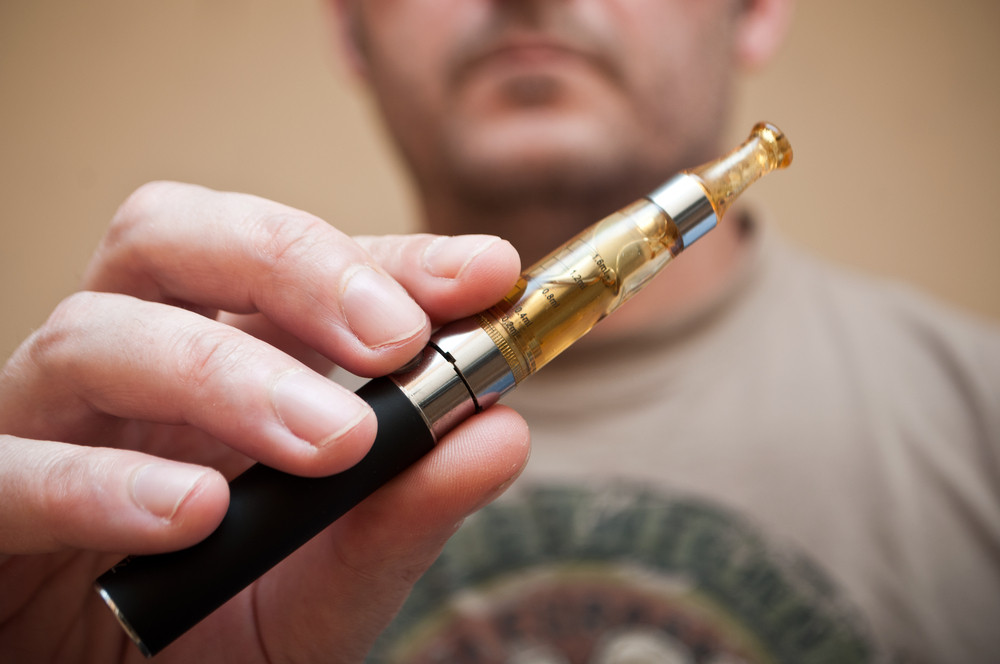
Electronic Cigarettes (ECs) also known as Electronic Nicotine Delivery Systems (ENDS) have rapidly grown in popularity since their introduction in 2003. Despite their increased availability and use, research evidence on the short and long-term effects, content and safety of ECs is limited.
A recent report for Public Health England (Britton and Bogdanovica, 2014) outlines the potential health benefits of ECs, but recommends that careful regulation is required to to maximise these benefits whilst minimising harm and risks.
The World Health Organization has recently produced a report on the regulation of ECs ahead of the WHO Framework Convention on Tobacco Control in October 2014 (WHO, 2014). The report states that regulations are needed to:
- Impede the promotion of ECs to non-smokers and young people
- Minimise risk from ECs to users and non-users
- Prevent unproven claims about the health benefits of ECs
- Protect tobacco control efforts from the interests of the tobacco industry
A conclusion of the report is that there is currently insufficient evidence to conclude that ECs assist smoking cessation. Additionally, the report highlights the need for further research on multiple areas of EC use.
A recent review published in Addiction (Hajek et al, 2014) examined the available research on the use, content and safety of ECs to assess the potential harms and benefits of these devices. This works offers the potential to understand evidence that may inform the regulation of EC use.

No matter how hard he tried, Nigel never really pulled off the smouldering James Dean look.
Methods
The authors searched Medline, PsycINFO and EBM, Google Scholar, EMBASE and CINAHL databases for studies using the search terms “e-cig*”, “elect* cigar*” and “electronic nicotine”. This search produced 286 records that were screened by two independent reviewers. Studies were deemed suitable for inclusion if they reported original data that could inform EC policy. Using these criteria 81 studies were selected for the review.
Results
Survey of EC Users
| Country | 2009 | 2010 | 2011 | 2012 | 2013 |
| US | 0.6% | 2.7% | 6.2% | ||
| UK | 2.7% | 6.7% | 11.0% |
- E-cigarette users tended to be younger, have a higher level of education and have a higher income than non-users. There did not appear to be any differences in use between males and females. However, the authors do caution that the majority of these results are from studies conducted in the US and Europe, where findings may not apply elsewhere
- Experimentation with e-cigarettes (ever use) in never smokers ranged from 0.1-3.8%, and use in the past 30 days ranged from 0-2.2%. 0.5% of US middle school never smokers had tried ECs
- EC use in children was restricted to those who had already tried smoking
- Adult users reported that ECs helped them reduce (60-86%) or quit tobacco smoking (42-99%). ECs were perceived as less addictive than cigarettes and only 18% of adults reported craving ECs as much as tobacco
EC Content
- Studies indicate propylene glycol should be safe for adults to inhale, however in children inhalation could exacerbate or induce respiratory illness. Glycerol is non-toxic but can produce toxic acrolein when heated
- Nicotine in e-liquids has low levels of tobacco impurities and fewer than those in tobacco smoke and smokeless tobacco
- Nicotine content of e-liquids was accurate for most brands of EC. Labelling of nicotine content was often vague or inaccurate or absent
- Interpretation of studies on the content of ECs is limited by a wide range of brands, flavourings, nicotine concentrations and heating elements
- Inhalation of propylene glycol and glycerol appears to be low risk, however the long-term effects of inhalation of these chemicals and EC additives and flavourings are not yet known. No long-term studies have examined the effects of passive exposure to EC aerosol

The wide range of e-cigarette brands may make pooling of data from many studies problematic. Photo: Just Ard CC BY-NC-ND 2.0
EC Safety
- Mouth and throat irritation were the most commonly reported adverse health effects from EC use. Some studies have reported evidence of increased blood pressure and respiratory function
- Nicotine in e-liquids can be dangerous or lethal if ingested, especially by children
- Whilst there have been several media reports of adverse effects of EC use including facial burns from EC explosion, randomised clinical trials have not found any serious adverse events
Effects on Smokers
- Experienced EC users achieve similar nicotine levels from ECs to those obtained from smoking
- There is preliminary evidence that EC use facilitates quitting and reduction in smoking
- In the UK, EC use to aid smoking cessation is greater than use of nicotine replacement therapy
- In the UK, increased EC use has been reported alongside increased cessation rates, continued reduction in smoking prevalence and no increase in smoking initiation rates. However, it is not known whether EC use contributes to these tobacco control trends

There is preliminary evidence that EC use facilitates quitting and reduction in smoking, but more research is needed
Conclusions
The authors conclude that important regulatory decisions regarding EC use should be evidence-based to ensure maximum health benefits and minimum risks.
The authors suggest that there are three hypothetical routes to negative outcomes and one hypothetical route to a positive outcome from the reviewed evidence.
EC use would generate negative outcomes if:
- ECs cause excess mortality and morbidity
- Smokers who would ordinarily quit, use ECs and continue to smoke
- Young people who would not otherwise try smoking use ECs and then start smoking
- EC use indirectly increases smoking prevalence by making smoking acceptable
EC use would generate positive outcomes if:
- ECs reduce harm at the individual and population level by reducing smoking rates

The authors suggest that e-cigarettes will generate positive outcomes if they help to reduce smoking rates, but they also highlight some potential negative effects.
Implications
The authors finish by highlighting implication for policy-makers, researchers and health professionals:
- For policy-makers: regulatory decisions will be of greatest benefit when they are evidence-based and include appraisal of potential risks and benefits of EC use
- For researchers: there are two key points (1) to closely monitor the relationship between EC use and smoking behaviour and (2) to study health outcomes in EC users (sole EC users and EC and tobacco smokers) with those in tobacco smokers and non-smokers
- For health professionals: to support smokers wishing to quit smoking tobacco and switch to ECs to reduce harm. Health professionals should also emphasise the importance of quitting both tobacco and nicotine
Commentary
This review offers a snapshot of the current available evidence for the use, content, safety and effects of ECs. The review is a timely and valuable contribution to our understanding of some of the issues to be considered in the regulation of ECs.
However, for stakeholders (e.g. policy-makers, WHO) to make decisions regarding policy and regulation the quality of the evidence presented in this review should be examined. The methodological rigor (e.g. study design, sample size, characteristics of participants) of the studies included in the review was not reported. However, it is essential that regulatory decisions should consider the quality of studies in determining the value of evidence to support regulation.
Additionally, the review does not report the potential impact of EC advertising and EC use in public places on non-smokers, young people and ex-smokers. The WHO highlights EC advertising and indoor exposure to EC use as research priorities in their report on regulation. It is therefore essential that studies on these aspects of EC use are considered in the review of evidence to support regulation.

This review did not report the quality of the included studies, so professionals and policy makers should be careful about how they use these findings.
Links
Hajek et al (2014) Electronic cigarettes: review of use, content, safety, effects on smokers and potential for harm and benefit. Addiction. doi:10.1111/add.12659 [Abstract]
WHO (2014) Backgrounder on WHO report on regulation of e-cigarettes and similar products. World Health Organization, 2014.
Britton and Bogdanovica (2014) Electronic cigarettes: A report commissioned by Public Health England (PDF). Public Health England, 2014.


RT @Mental_Elf: E-cigarettes: a review of the evidence-base for regulation http://t.co/IBloNmKpc7
RT @aghoury79: E-cigarettes: a review of the evidence-base for regulation: Sally Adams summarises a recent review of e-cigare… http://t.c…
Today’s blog on e-cigarettes is a debut from @SallyScientist It’s marvellous to have you in the team Sally! http://t.co/xdKPxj0zUD
@Mental_Elf great to be part of the team :)
My first blog for @Mental_Elf on recent review of e-cigs http://t.co/TU6h5mRsN6
@SallyScientist @Mental_Elf That is nicely balanced! Thank you.
Did you miss all the e-cigarette news last week? Fear not, @SallyScientist has summarised it all for you http://t.co/xdKPxj0zUD
Olivia Cialdi liked this on Facebook.
RT @Mental_Elf: Pls RT @UKCTAS E-cigarettes: a review of the evidence-base for regulation http://t.co/xdKPxj0zUD
There’s emerging evidence that e-cigarette use facilitates quitting & reduction in smoking, but more research needed http://t.co/xdKPxj0zUD
E-cigarettes: a review of the evidence-base for regulation http://t.co/CLllQvyPYB via @sharethis
Reports on e-cigarettes are coming thick & fast, but what we need is an unbiased & rigorous summary of the evidence http://t.co/xdKPxj0zUD
@Mental_Elf consider why people smoke, for coping and wellbeing. This is not covered in the “evidence” and needs to be considered
Mental Elf: E-cigarettes: a review of the evidence-base for regulation http://t.co/6jxmUzxZpu
E-cigs: a review of the evidence base for regulation http://t.co/pZzW2XzbhD
Hampshire Healthcare Library Service liked this on Facebook.
The Mental Elf liked this on Facebook.
RT @Mental_Elf: Regulatory decisions on e-cigarettes should be evidence-based to ensure maximum health benefits & minimum risks http://t.co…
Don’t miss: E-cigarettes – a review of the evidence-base for regulation http://t.co/xdKPxj0zUD #EBP #ecigarettes #ecigs
Sally Adams liked this on Facebook.
E-cigarettes: a review of the evidence-base for regulation (via @Pocket) http://t.co/BCNQY1ZCb4
Great summary by @sallyscientist from @UKCTAS on @Mental_Elf: E-cigs: a review of the evidence-base for regulation http://t.co/ZdQ3Jqv5Q0
Anne Middleton Phin liked this on Facebook.
[…] Arguments about the potential benefits and harms of electronic cigarettes (E-Cigs) are repeated on a weekly basis in the news, and we covered this topic in a recent Mental Elf blog. […]